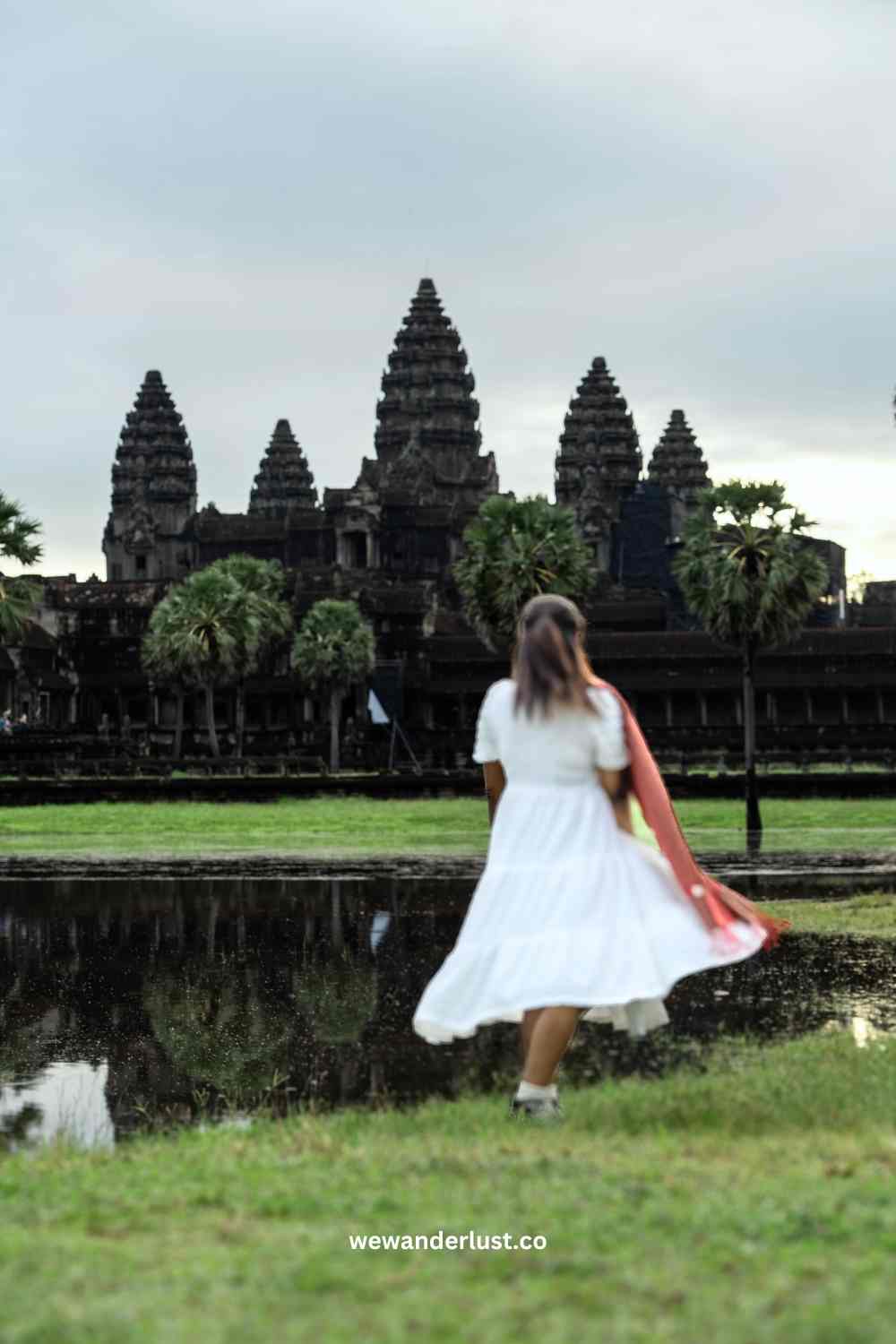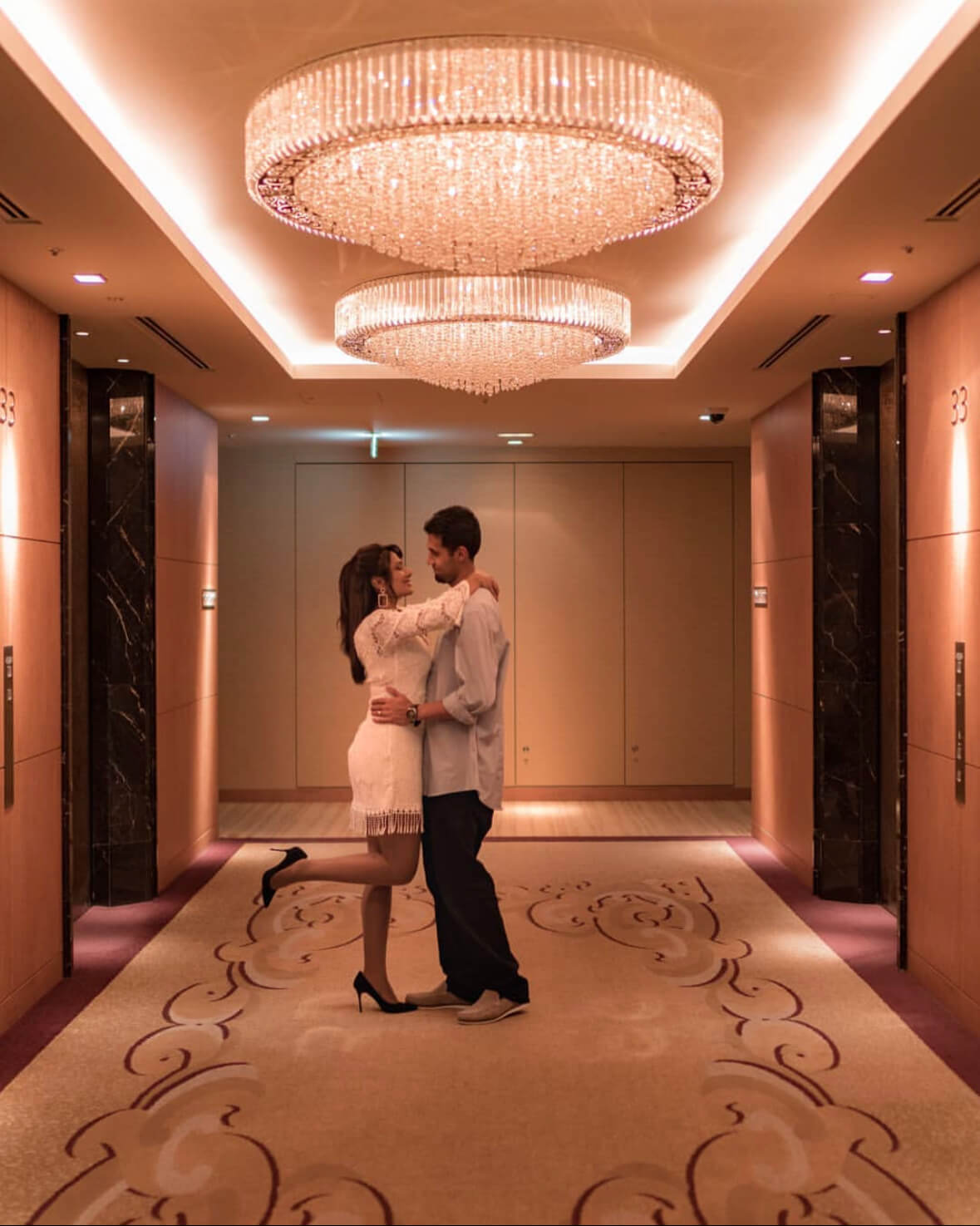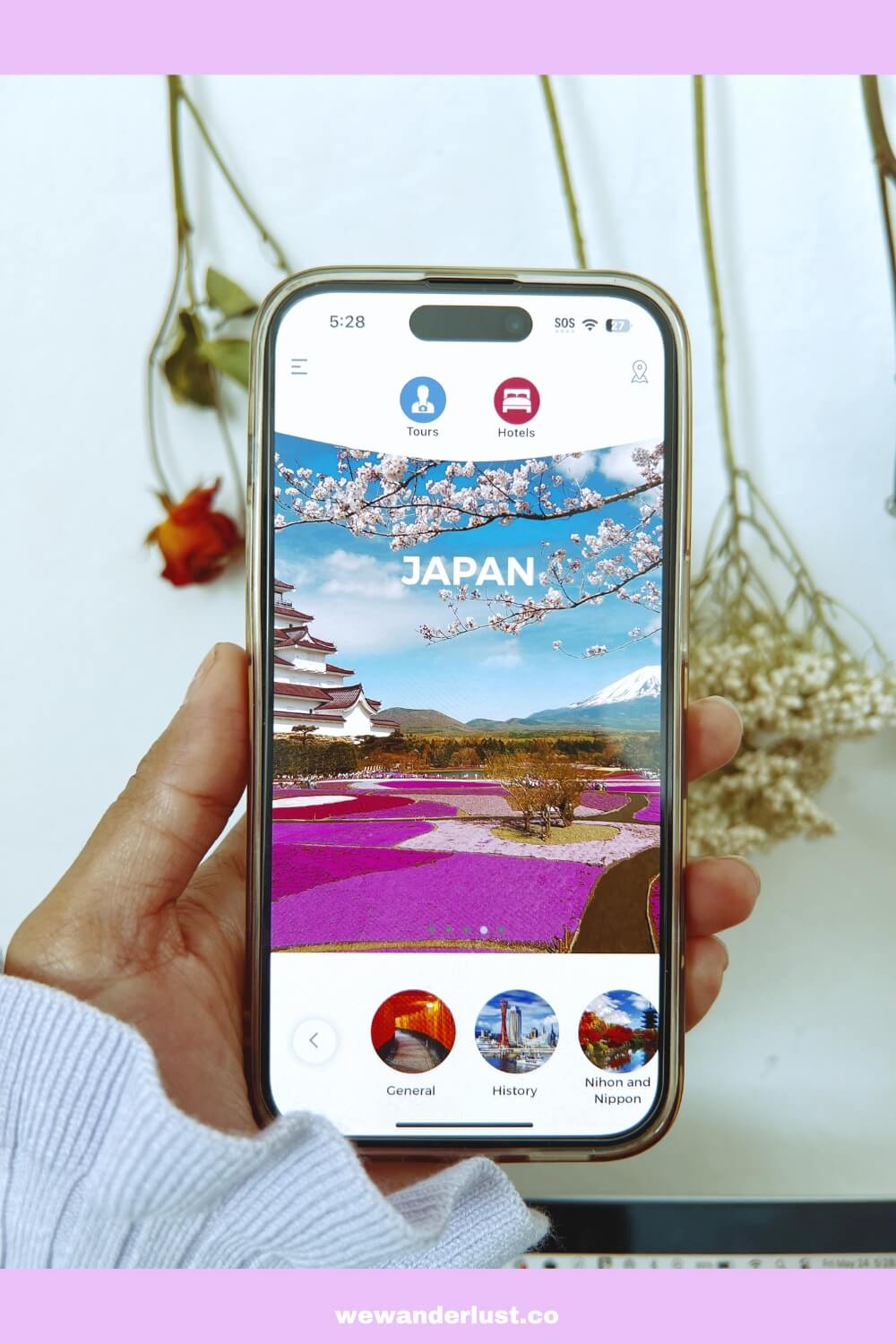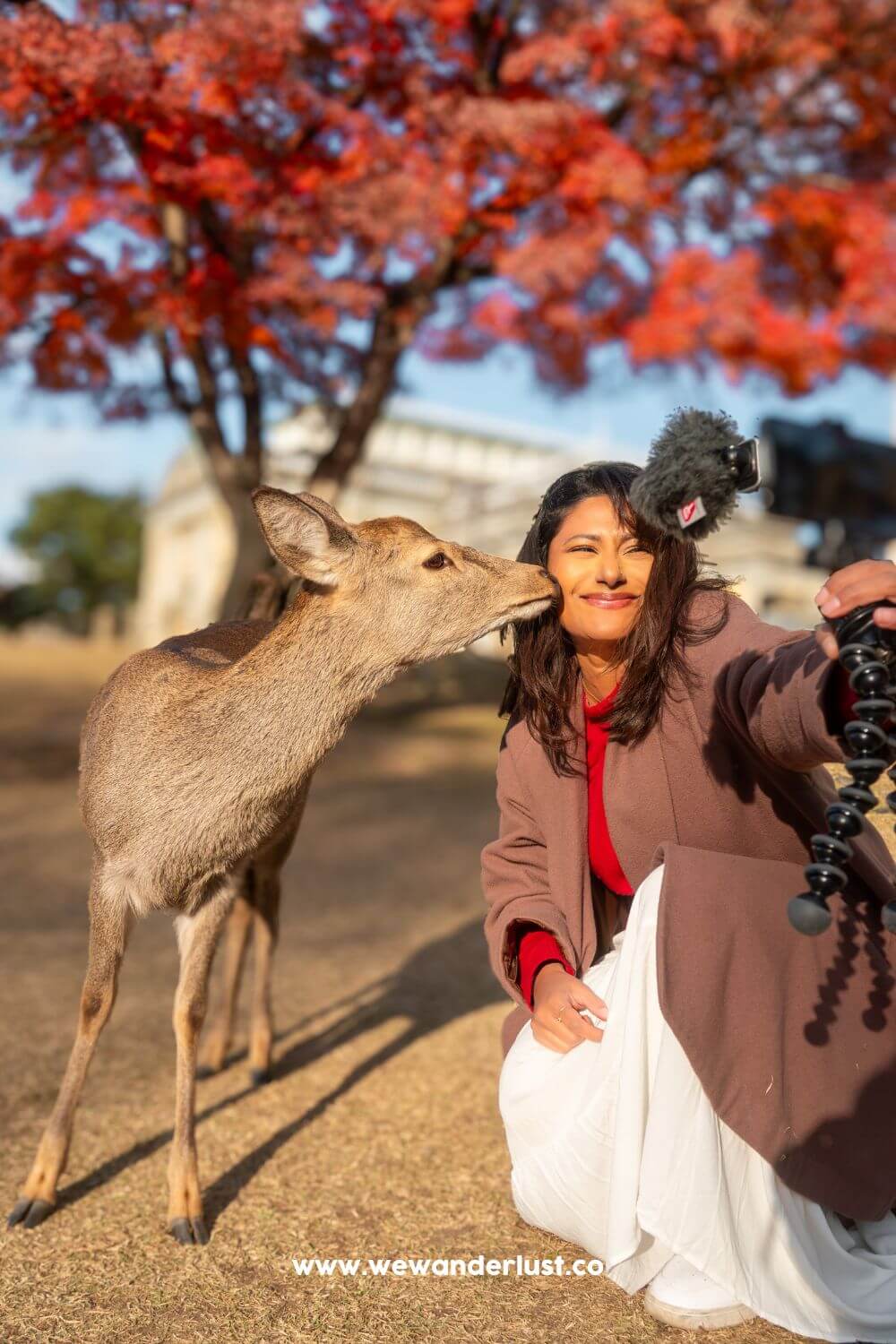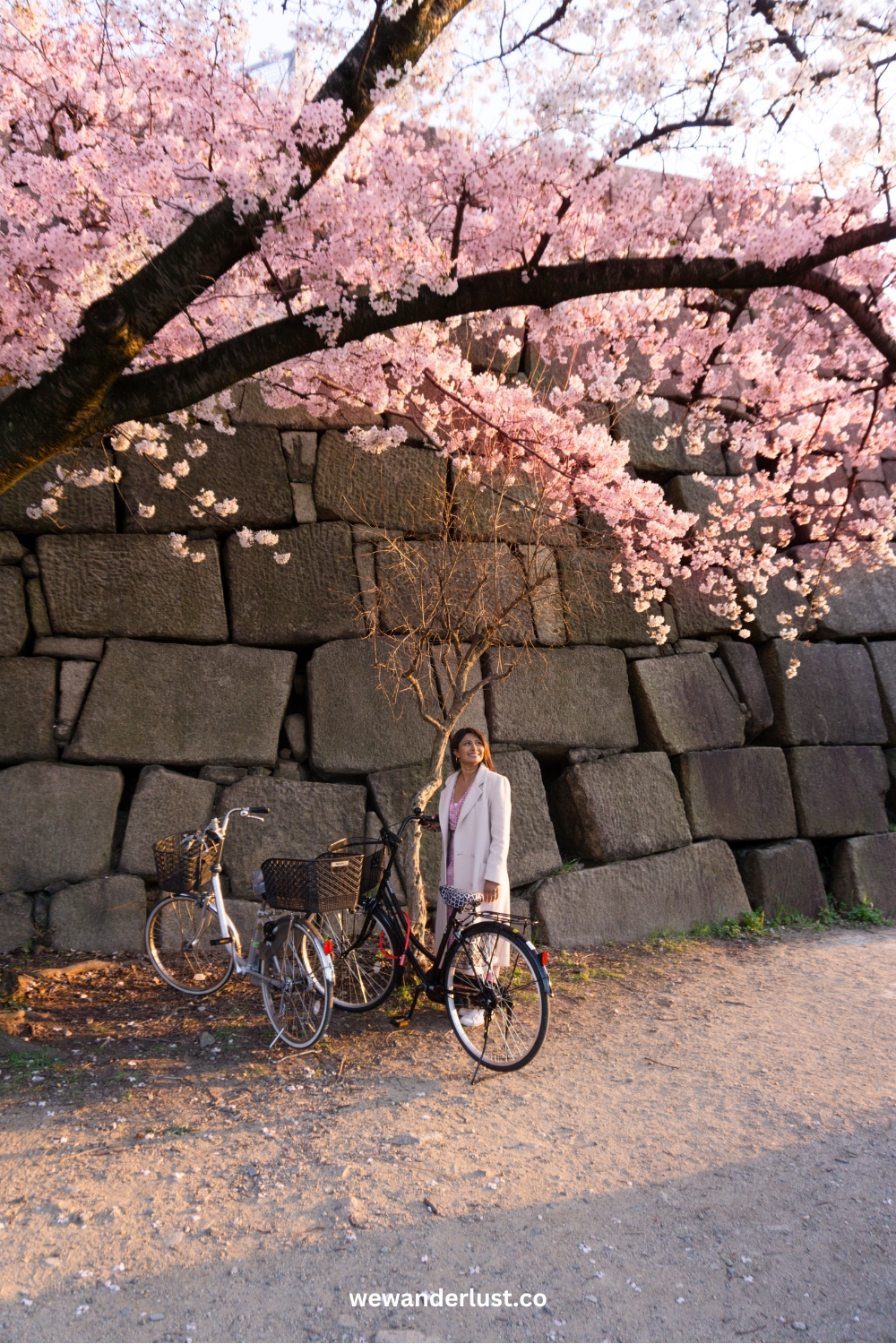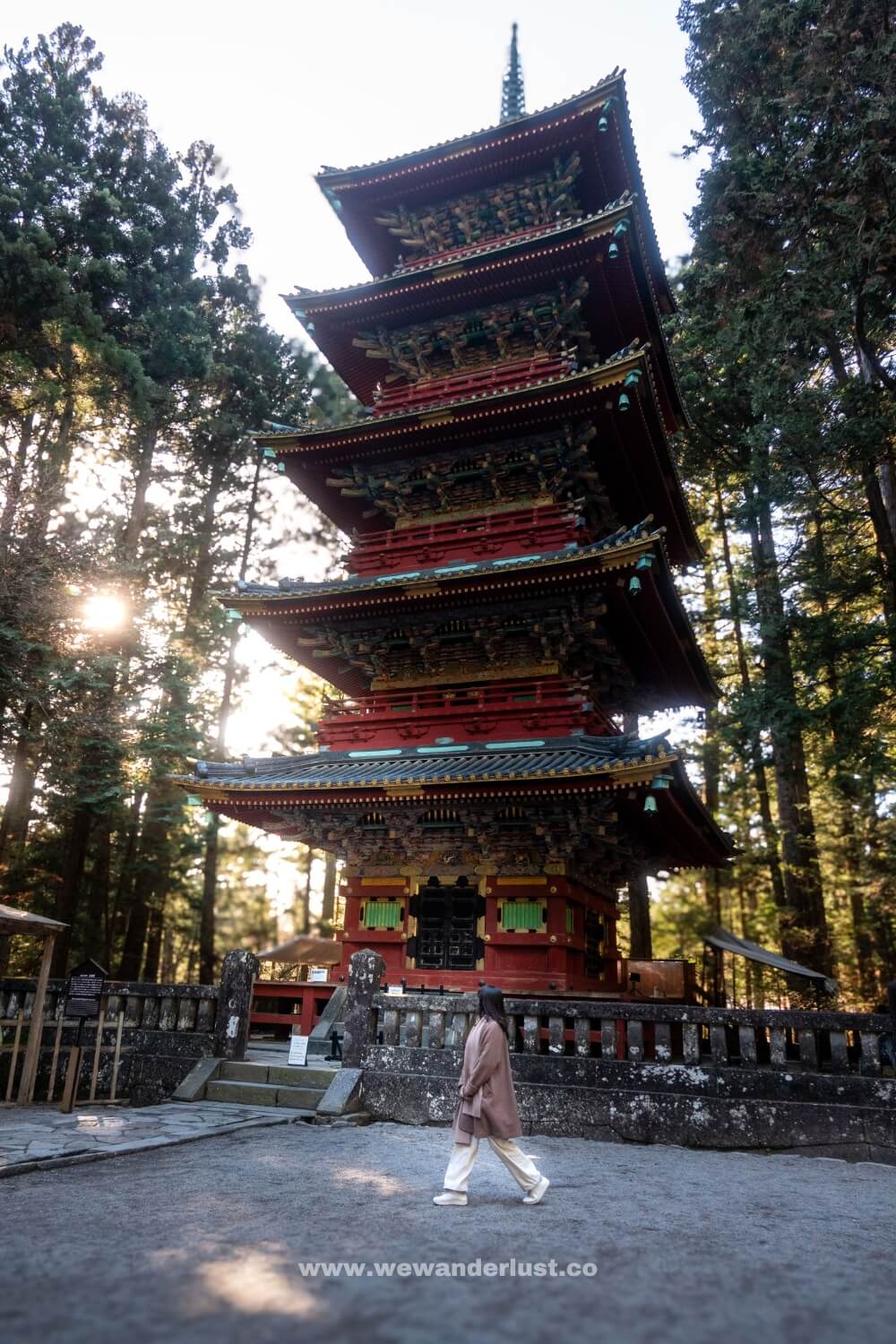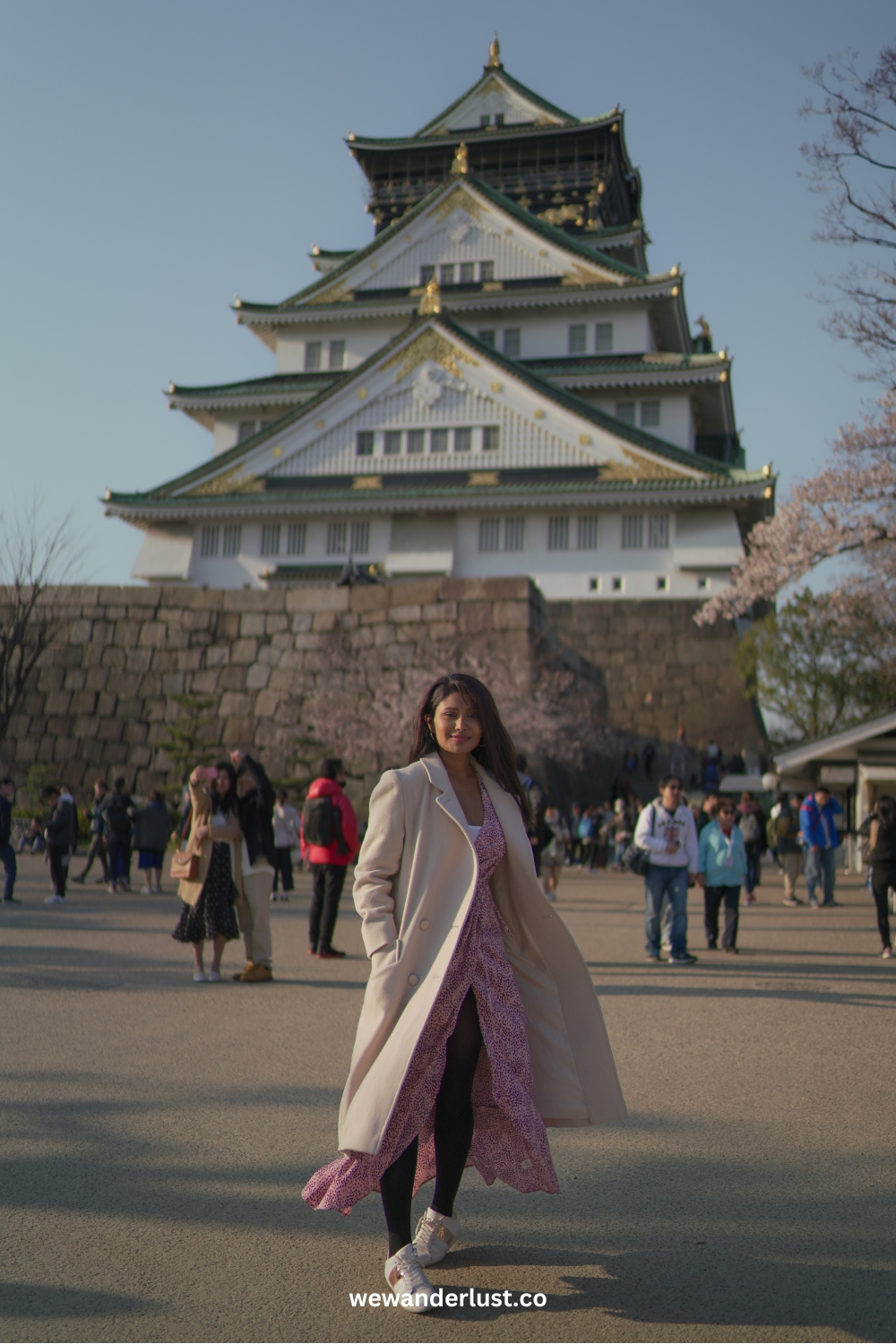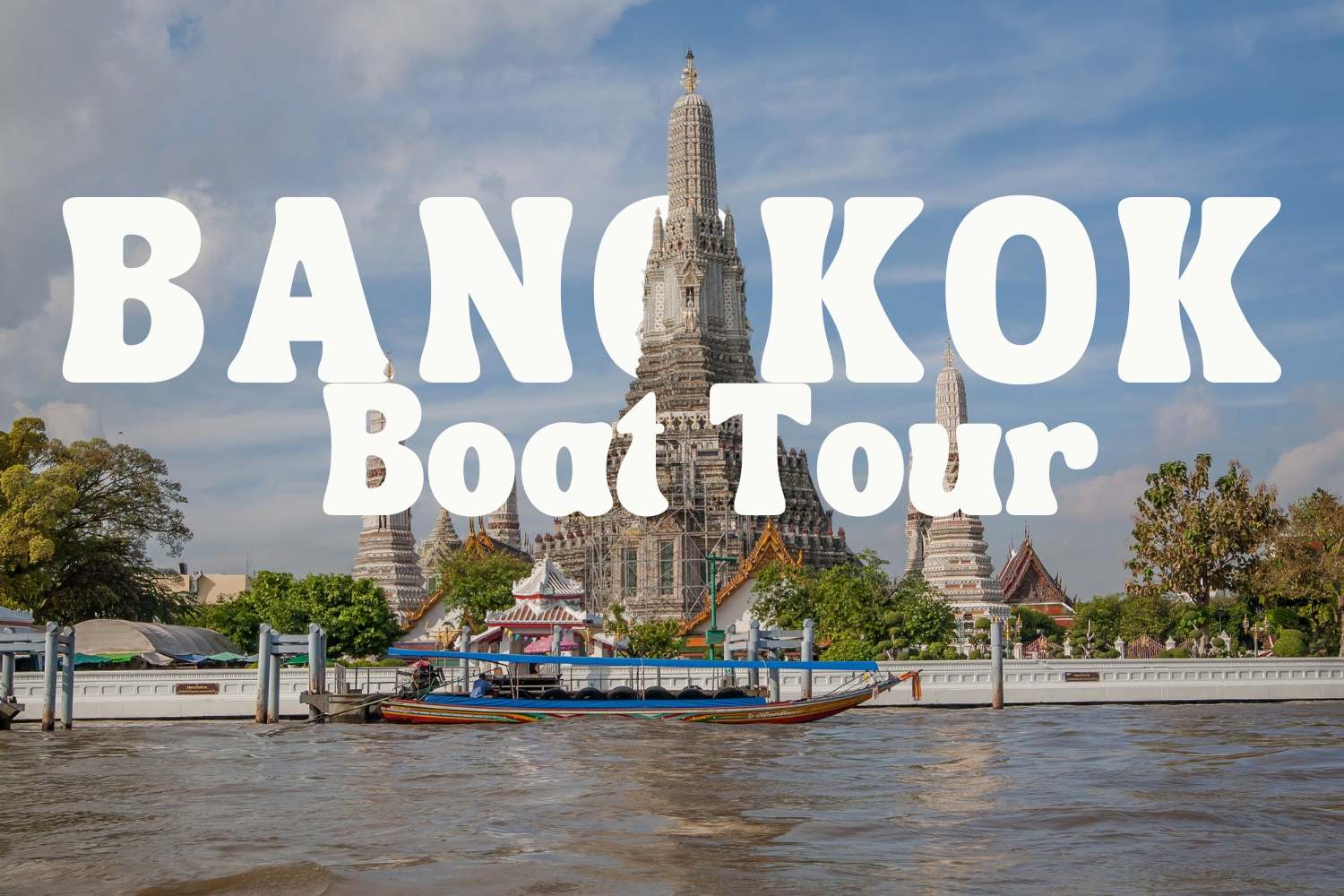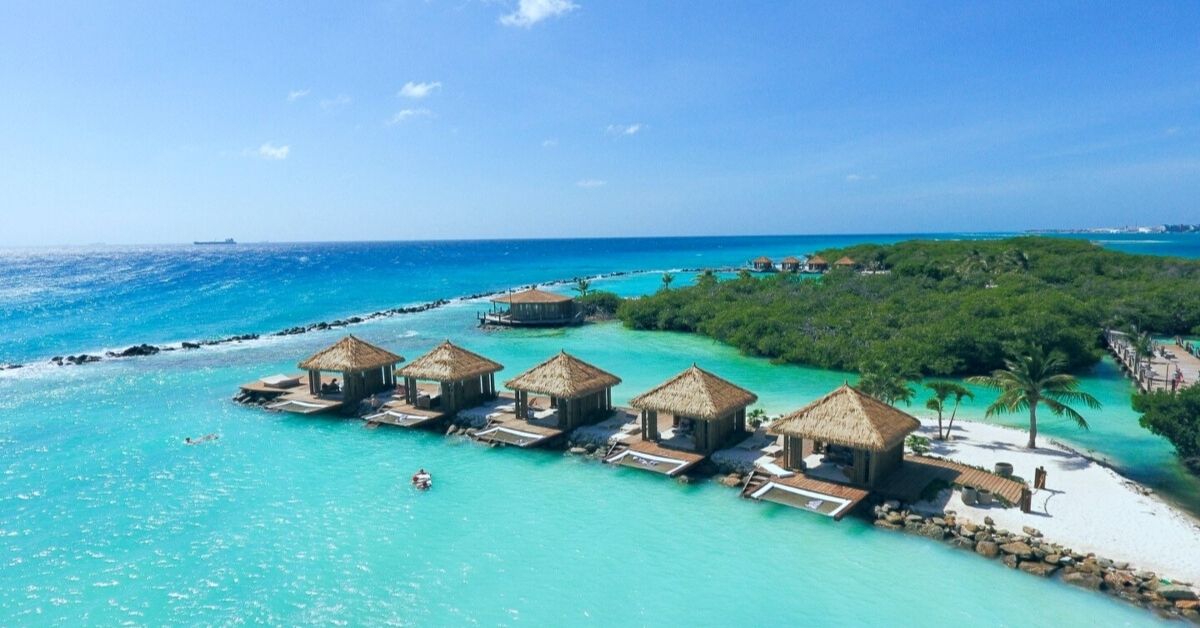If You Only Have 1 Day in Angkor Wat, Here’s the Perfect Itinerary
Visiting Angkor Wat in just one day might seem overwhelming, especially considering it’s the largest religious monument in the world, spanning over 162 hectares. This UNESCO World Heritage Site, with its intricate carvings, ancient architecture, and breathtaking sunrise vistas, is a must-see destination in Cambodia.
The key to making the most of your day in Angkor Wat is planning ahead and focusing on the highlights. Having explored the magnificent Angkor Wat on a DIY tour, we’ll share our first-hand experiences, insider tips, and a detailed itinerary to help you enjoy a seamless, enriching visit. Whether you’re here for the Angkor Wat sunrise, the historic temples, or the serene nature, this guide will ensure you leave with unforgettable memories. If you’re looking for more things to do in the area, check out our guide on the 11 Best Things to Do in Siem Reap (2025 Guide) for additional inspiration.
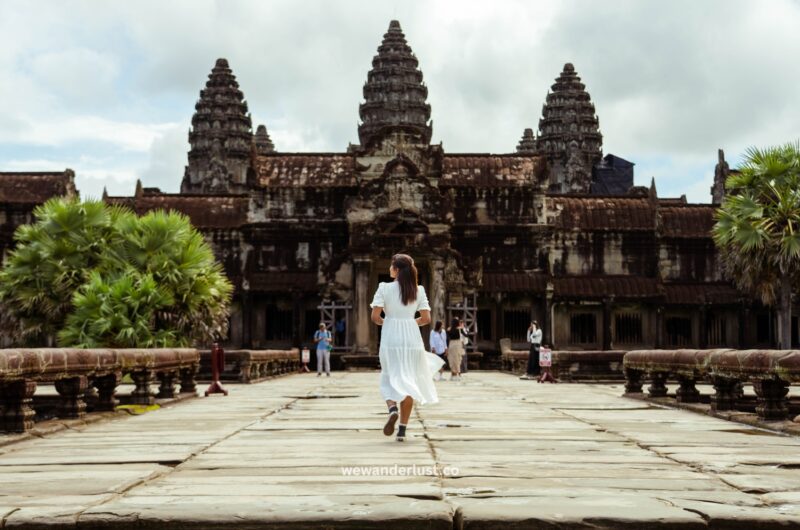
🔻Watch the YouTube Video Below 🔻
What is Angkor Wat?
A Brief History
Angkor Wat is the largest religious monument in the world, built in the 12th century by King Suryavarman II. Originally a Hindu temple dedicated to Vishnu, it later transitioned into a Buddhist temple and remains a symbol of Cambodia’s cultural and spiritual heritage.
Location and Size
Angkor Wat is located near Siem Reap, Cambodia, within the Angkor Archaeological Park, which spans to almost 1500 acres. Surrounded by lush forests, ancient ruins, and man-made reservoirs, the site truly feels like stepping back in time.
Standing before Angkor Wat, we felt a deep connection to history. The vastness of the complex, the intricate carvings, and the engineering marvels left us in awe.

Why Was Angkor Wat Built?
Angkor Wat was built to symbolize Mount Meru, the center of the universe in Hindu cosmology. It was both a temple and a mausoleum for King Suryavarman II, showcasing the Khmer Empire’s architectural brilliance and spiritual devotion. Standing in front of Angkor Wat, we couldn’t help but feel awe-struck. The sheer scale of the complex and the intricate carvings left us speechless. It felt like walking through a living piece of history.
Why is Angkor Wat Important?
Angkor Wat isn’t just a temple; it’s a symbol of Cambodia’s identity and appears on the national flag. Its intricate bas-reliefs, advanced hydraulic systems, and spiritual significance make it a masterpiece of human ingenuity. Designated a UNESCO World Heritage Site, it attracts millions of visitors every year.
Where is Angkor Wat Located?
Nestled in the lush forests of Siem Reap, Cambodia, Angkor Wat is part of the larger Angkor Archaeological Park, which spans over 600 hectares. The temple itself occupies 162 hectares and is surrounded by a massive moat, which reflects the grandeur of this architectural wonder.Getting to Angkor Wat is easy from Siem Reap, which serves as the gateway to the archaeological park. The area is well-connected by tuk-tuks, private cars, and even bicycles, ensuring you can explore at your own pace.
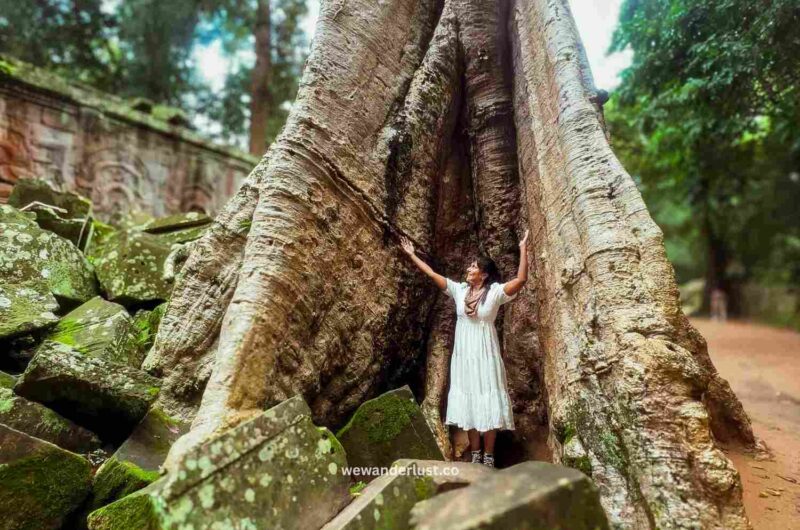
Visiting Angkor Wat: Planning and Logistics
How to Get Tickets
To visit Angkor Wat, you’ll need an Angkor Pass, which costs $37 USD for one day, $62 USD for three days, or $72 USD for seven days. Tickets can be purchased online or at the official ticket office. Children under 12 can enter for free with valid ID.
Tip: Purchase your ticket online before your visit to skip the queues at the ticket office. It’s quick, easy, and ensures you can start your day early.
Transportation Options
Getting around Angkor Wat can be an adventure in itself. Here are the main options:
- Tuk-Tuks: The most popular choice, costing around $15–$25 USD per day depending on your itinerary.
- Bicycles: A budget-friendly and eco-friendly option, available for $2–$10 USD per day.
- Private Cars: Ideal for families or larger groups, offering comfort and air conditioning.
We opted for a tuk-tuk, and it was perfect for hopping between temples without the hassle of walking in the heat. Our driver even shared local tips along the way!
Best Times to Visit Angkor Wat
Timing is everything at Angkor Wat. Here’s when to go:
Early Morning (Sunrise): 5:00–7:00 AM
The Angkor Wat sunrise is a bucket-list experience. Watching the first rays of sunlight illuminate the temple is magical. Arrive early and head to the reflection pools near the West Gate for the best views.
Waking up at 4:00 AM was totally worth it. The serene silence as the sun rose behind Angkor Wat felt almost spiritual. Everyone stood in awe, soaking in the beauty of the moment.
Late Afternoon (Sunset): 3:00–5:30 PM
For another spectacular view, visit during sunset. The golden light highlights the temple’s intricate carvings. Consider Phnom Bakheng or Pre Rup Temple for panoramic sunset views.
Midday (Low Crowds): 11:00 AM–1:00 PM
While the heat can be intense, midday is the best time to escape the crowds. Explore lesser-known temples like Ta Nei or Banteay Kdei for a peaceful experience.
Top Temples to Visit in Angkor Archaeological Park
1. Angkor Wat – The Crown Jewel
Angkor Wat is the star of the show, and you’ll want to dedicate at least 2–3 hours here. Highlights include the bas-reliefs, the central tower, and the reflection pools.
Tip: Enter through the East Gate to avoid the crowds and explore the temple in reverse.
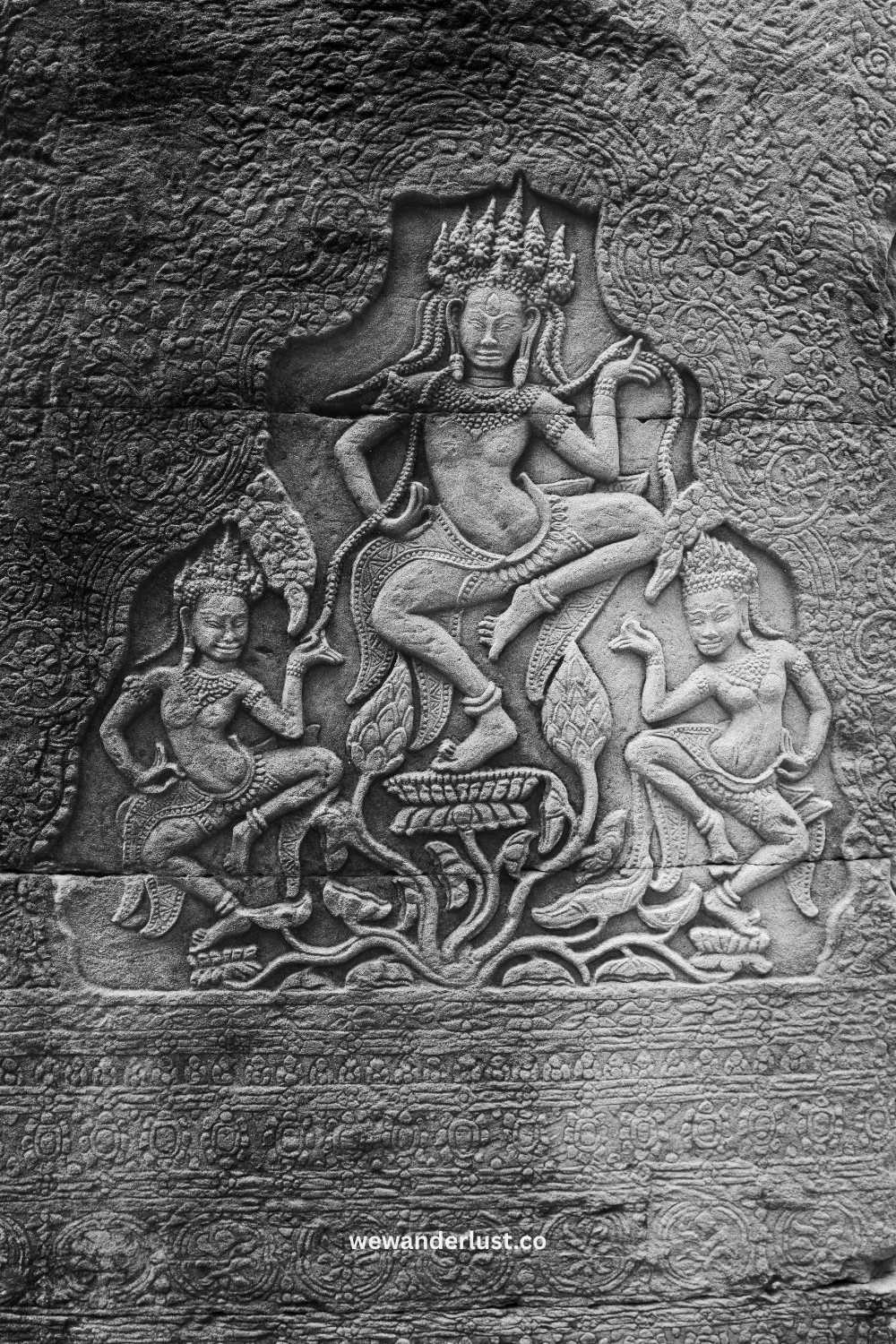

2. Bayon Temple – The Smiling Faces
Located in Angkor Thom, Bayon Temple is famous for its 216 giant stone faces. Each face is said to represent compassion and serenity, making it a must-visit spot.
Walking through Bayon was like meeting the past. The faces seemed to smile at us, their expression calm and timeless.
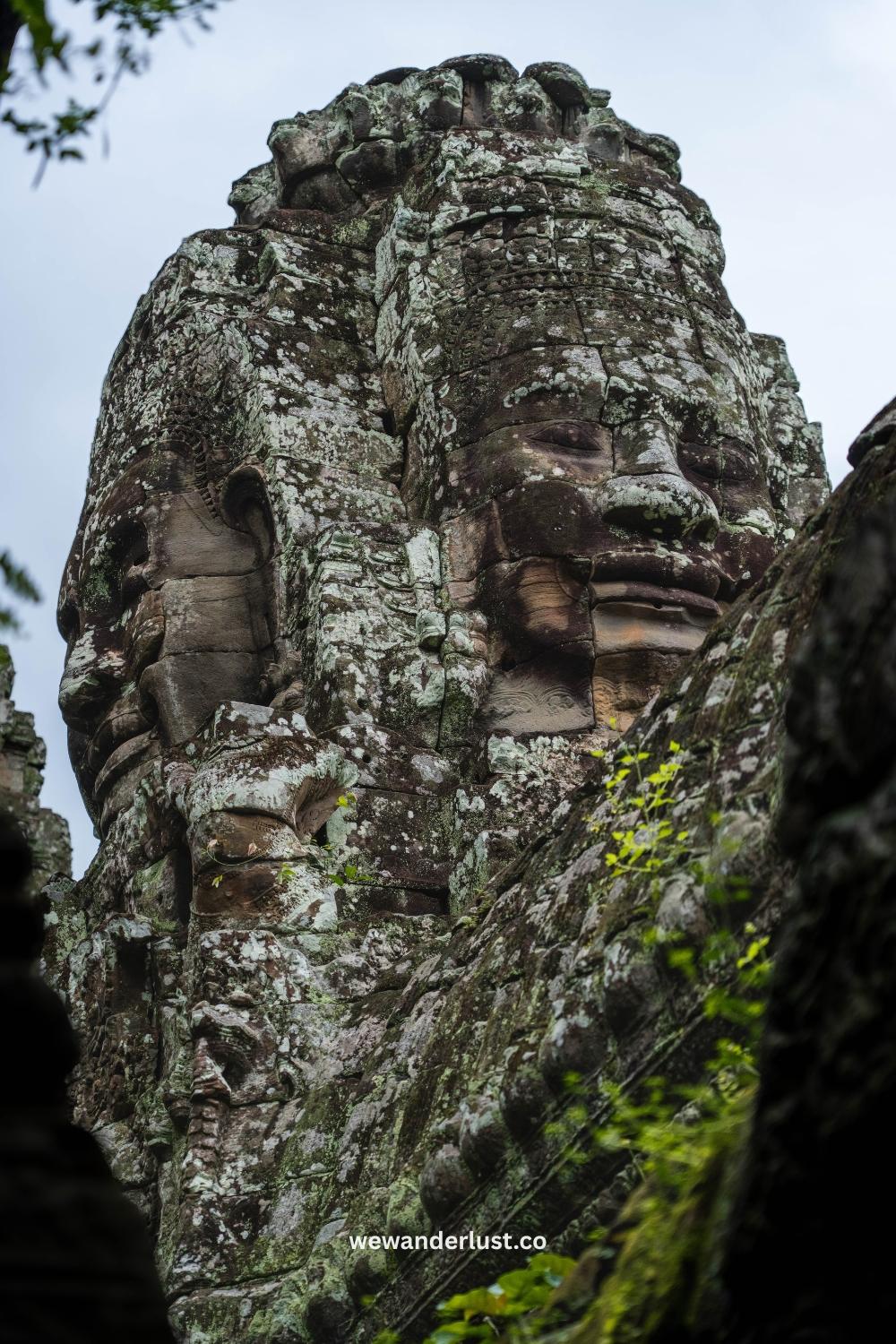

3. Ta Prohm – The Temple of the Jungle
Known as the “Tomb Raider Temple”, Ta Prohm is where massive trees entwine with ancient ruins. It’s a photographer’s dream and a testament to the power of nature.
Ta Prohm was our favorite. The way the trees reclaimed the temple made it feel like stepping into a mystical world.
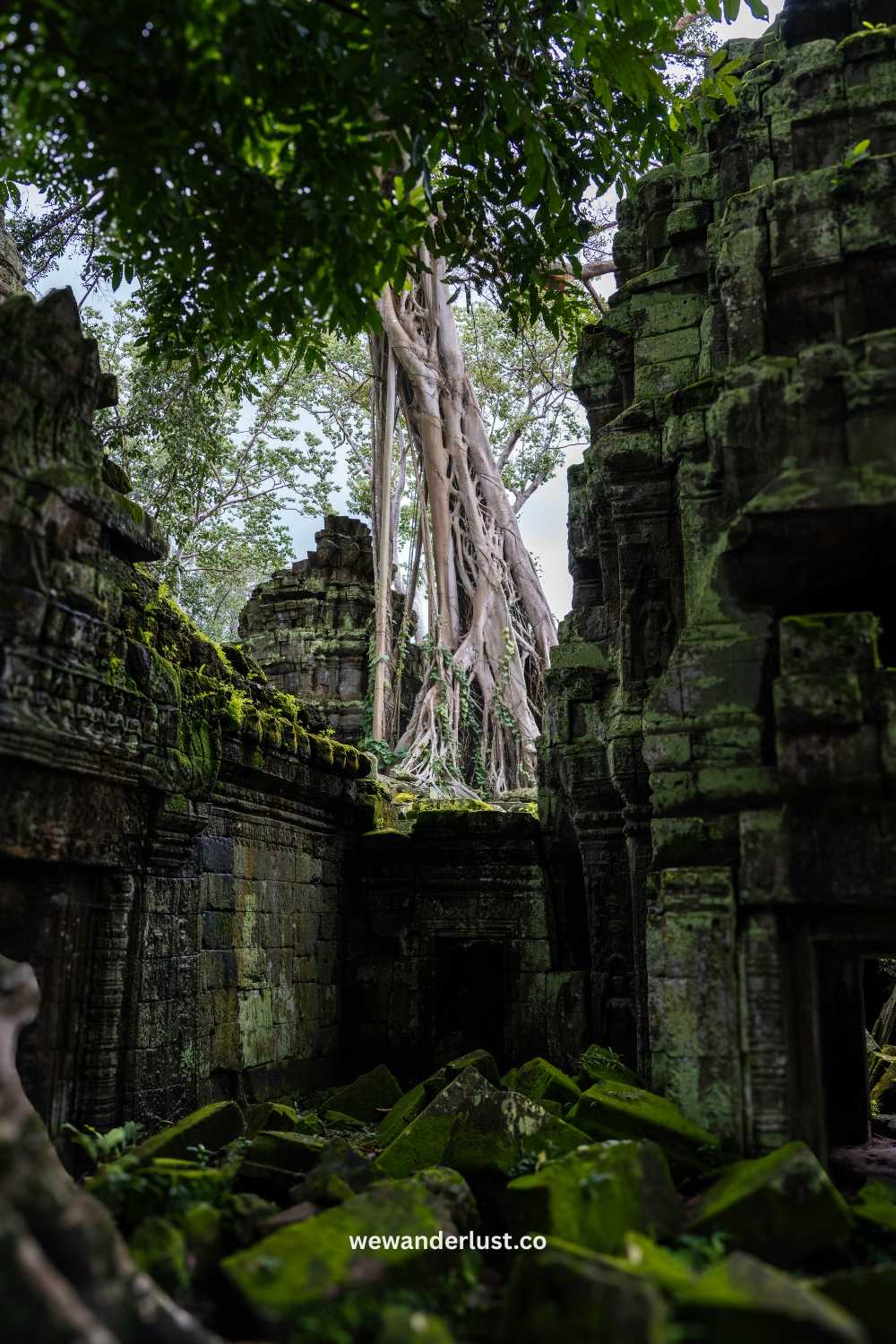
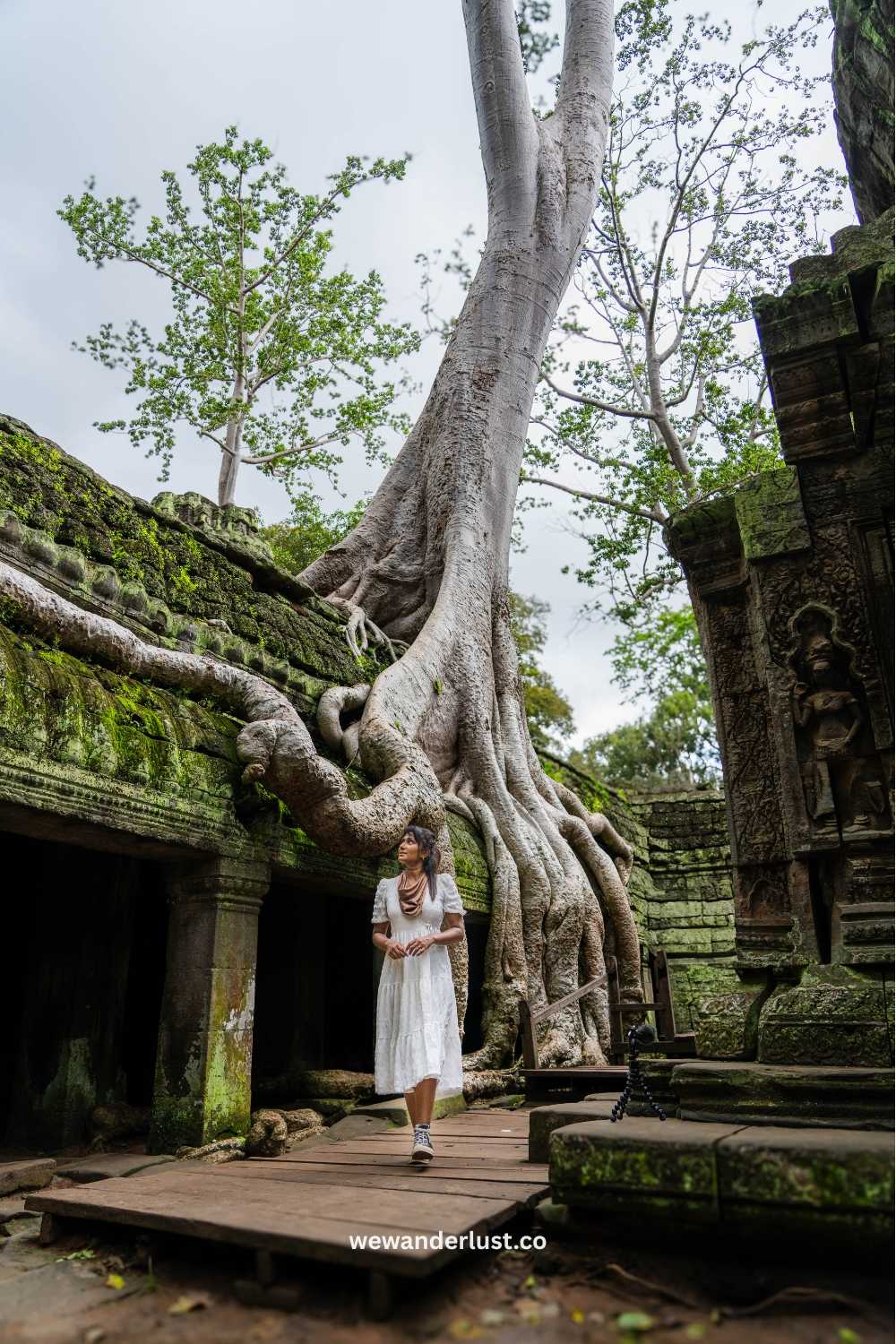
4. Preah Khan – A Hidden Gem
For a quieter experience, visit Preah Khan. This sprawling temple complex features beautiful carvings and fewer crowds, making it perfect for exploration.
Essential Tips for Visiting Angkor Wat
- Dress Modestly: Shoulders and knees must be covered as a sign of respect.
- Stay Hydrated: Bring plenty of water and wear sunscreen.
- Hire a Guide: Guides can provide great insights and help navigate the complex.
- Avoid Touching: Oils from your hands can accelerate the fading of ancient carvings.
- Bring Cash: Local photographers offer services for just $1 USD, but they only accept cash.
Dining Near Angkor Wat
Exploring temples all day is bound to make you hungry. Here are some top-rated restaurants near Angkor Wat:
- Riverside Cuisine: Affordable Khmer cuisine with fresh juices.
- Chanrey Tree: A fine-dining experience offering Cambodian classics like fish amok.
- Embassy Khmer Gastronomy: A seven-course tasting menu showcasing seasonal Khmer gastronomy.
After a long day, we treated ourselves to a scrumptious fish burrito and Birria tacos at Maybe Later Mexican Bar & Grill, fresh tropical fruit shakes at Shake Aunty, and finished off with some yummy Margherita pizza at the TukTuk Pizza Station. The fresh juices and flavorful dishes were the perfect way to end the day.

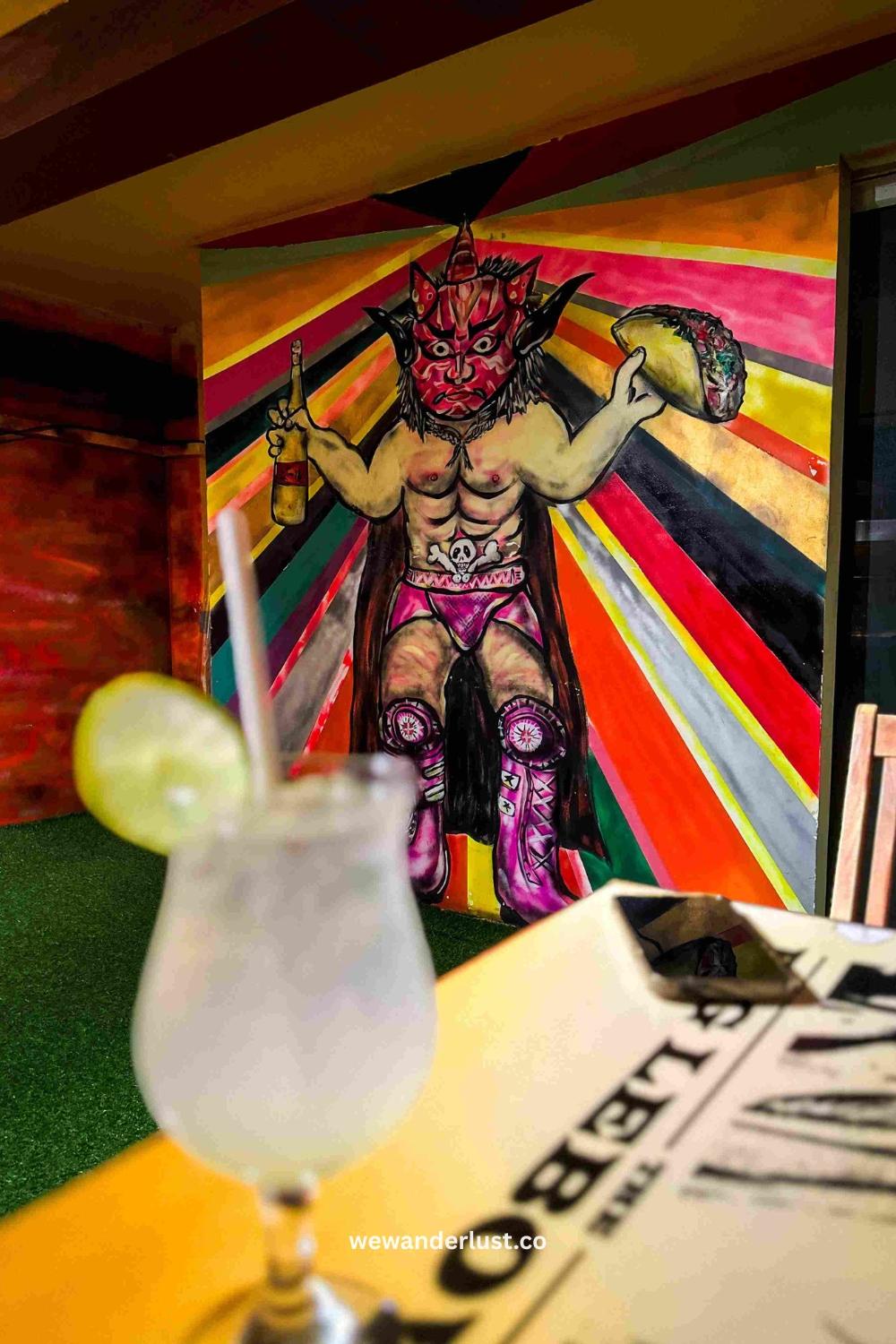
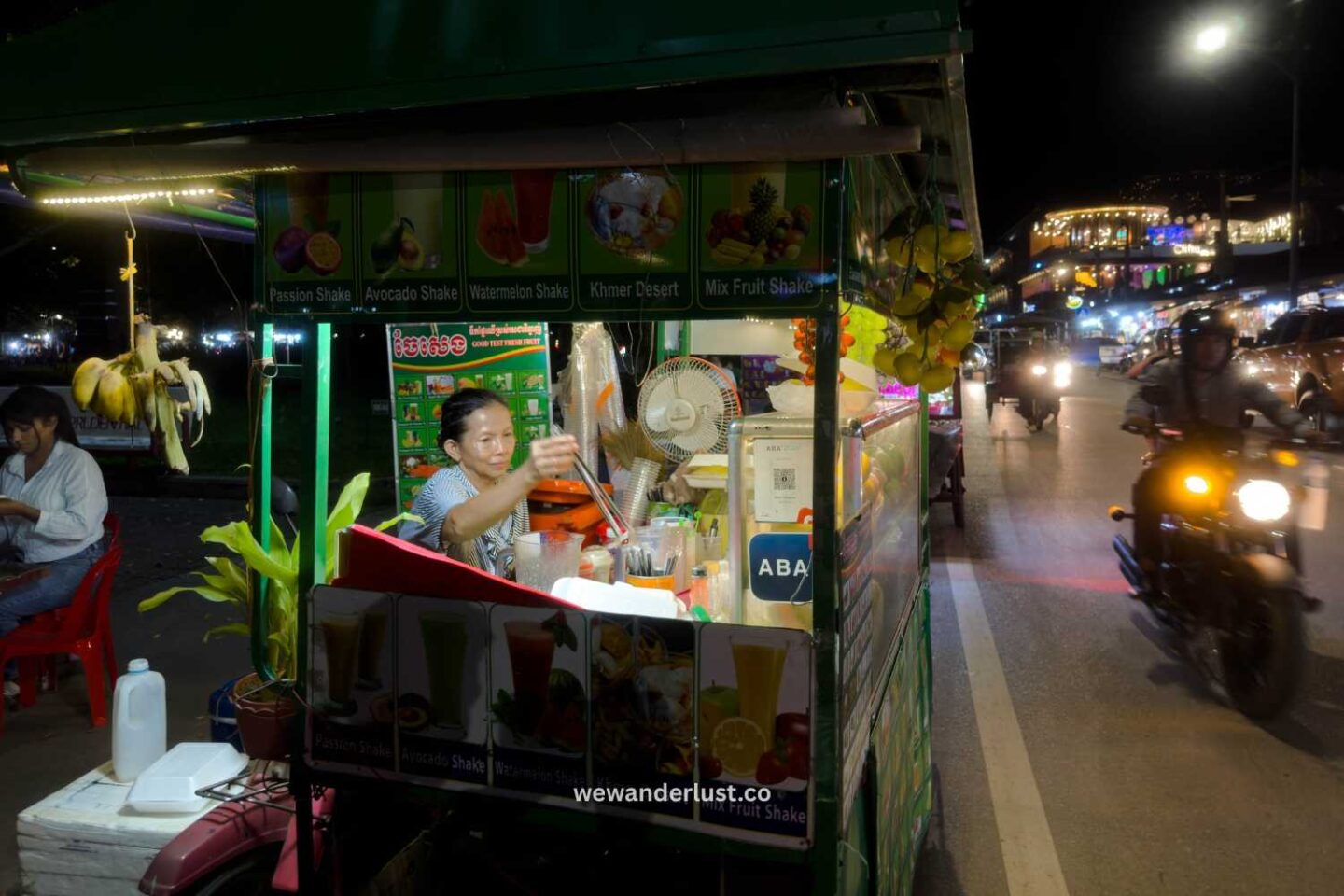
Where to Stay in Siem Reap
Finding the right place to stay in Siem Reap, the gateway to Angkor Wat, is essential to make the most of your trip. Whether you’re looking for budget accommodations, boutique stays, or luxurious retreats, Siem Reap has something for you.
Budget-Friendly Options
- Onederz Hostel Siem Reap
A top choice for budget travelers, this hostel combines affordability with great amenities. Enjoy dormitory or private rooms, a rooftop pool, and a central location close to the Old Market.
Price Range: Starting at $10/night - Lub d Cambodia Siem Reap
A modern hostel with spacious dorms, private rooms, and a vibrant social atmosphere. It’s perfect for solo travelers or backpackers looking for a convenient stay.
Price Range: Starting at $12/night
Mid-Range Accommodations
- The Aviary Hotel
A boutique hotel offering eco-friendly luxury and Cambodian-inspired decor. Located in the heart of Siem Reap, it’s a tranquil escape after a day of temple-hopping.
Price Range: Starting at $60/night - Golden Temple Hotel
Known for its warm hospitality, this hotel offers beautifully decorated rooms, a pool, and complimentary services like airport pickup and local snacks.
Price Range: Starting at $70/night
Luxury Stays
- Raffles Grand Hotel d’Angkor
A historic and iconic hotel, Raffles offers unparalleled luxury with colonial-style rooms, a massive pool, and world-class dining. Staying here is an experience in itself.
Price Range: Starting at $300/night - Shinta Mani Angkor
Located near the Old Market and Pub Street, this upscale boutique hotel combines contemporary design with Khmer culture. The serene atmosphere and impeccable service make it worth the splurge.
Price Range: Starting at $200/night
Tip: Book accommodations close to the center of Siem Reap for easy access to the Angkor Wat sunrise tour and local attractions like Pub Street and the Night Market. Many hotels and hostels also arrange tuk-tuk drivers and guided tours.
Angkor Wat Cambodia – Why You Shouldn’t Miss Visiting this 8th wonder of the world
Visiting Angkor Wat in just one day is an unforgettable experience. From the stunning Angkor Wat sunrise to exploring iconic temples like Bayon and Ta Prohm, every moment feels like a journey through time. Whether you’re a history buff, a photographer, or simply a someone seeking inspiration, Angkor Wat will leave you in awe.
As we stood before the silhouette of Angkor Wat at sunrise, we felt a profound connection to ancient history. This is more than just a destination – it’s a once-in-a-lifetime experience.
How many days will you be exploring the temples of Ankgor Wat? Dm us on Instagram if you have any more questions or need help with your itinerary.

